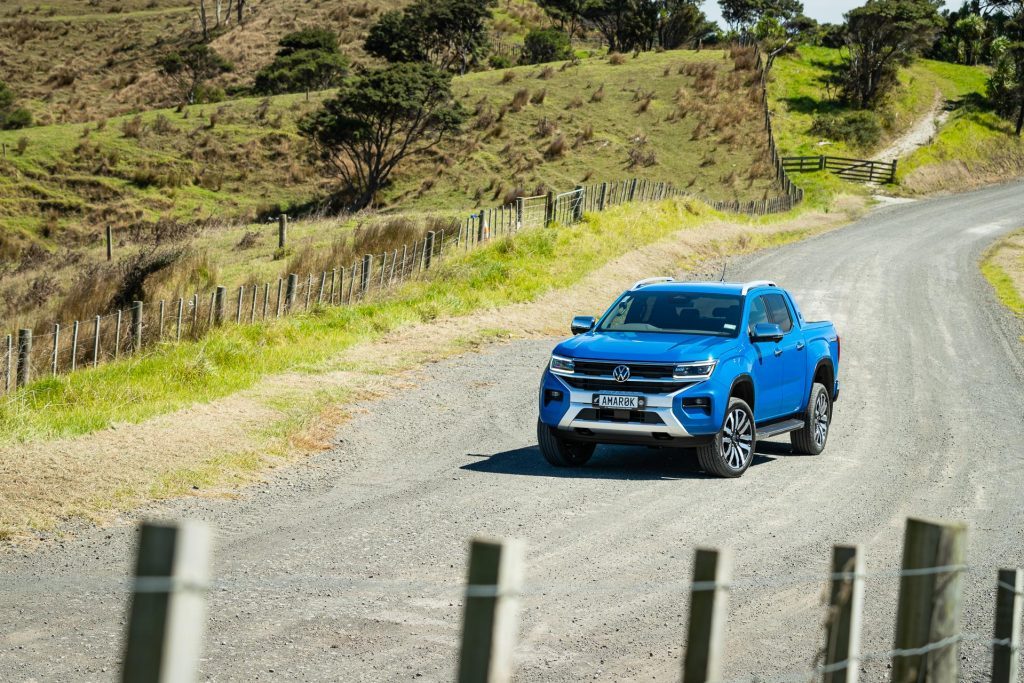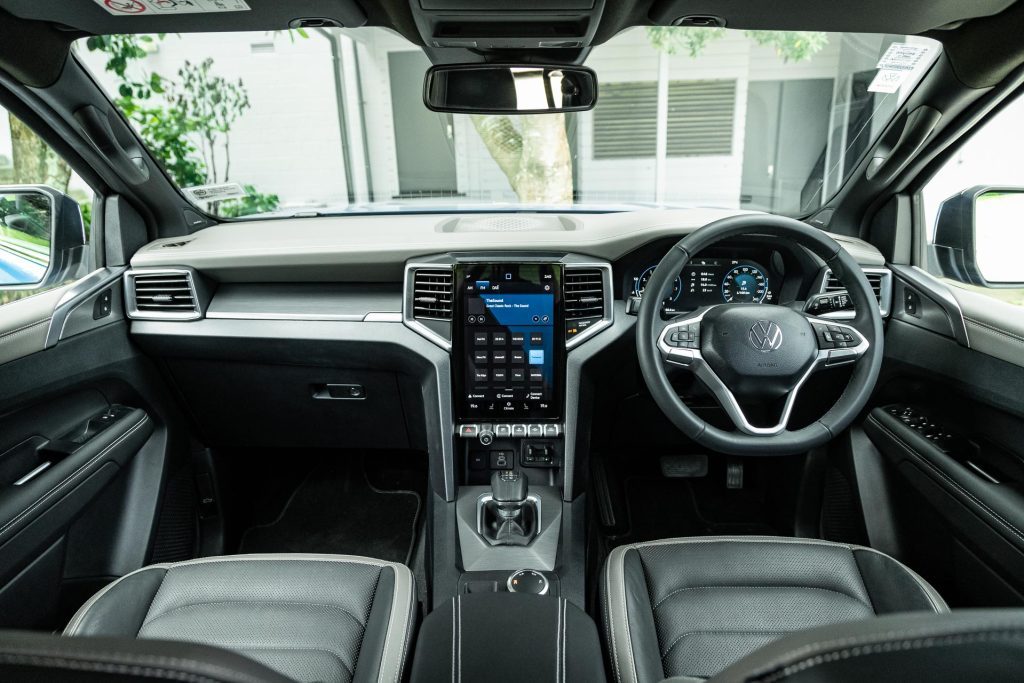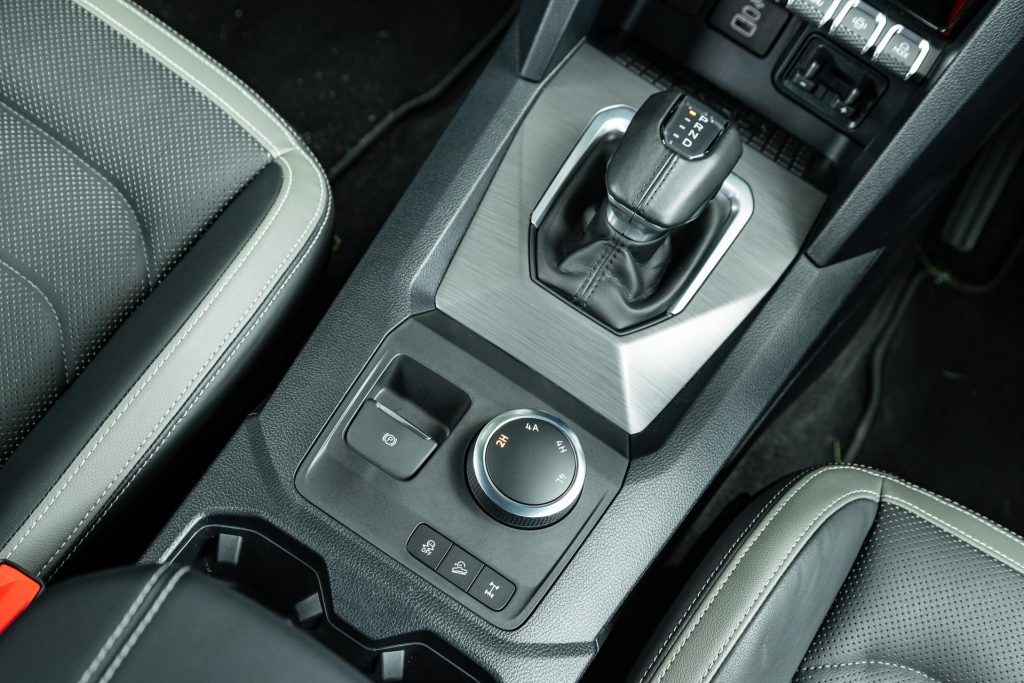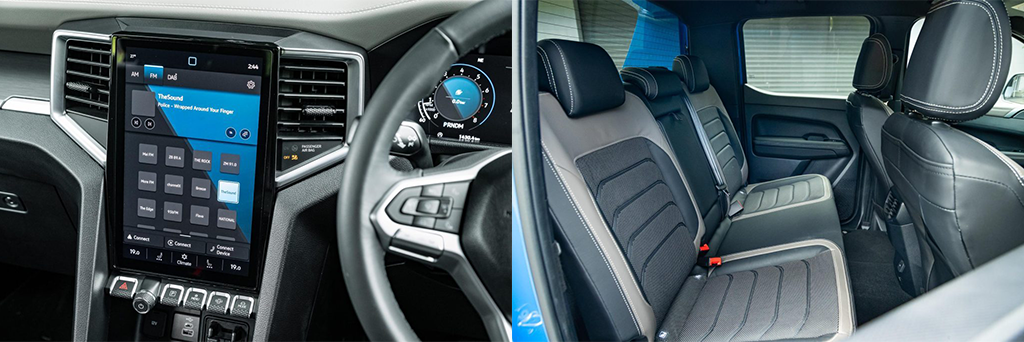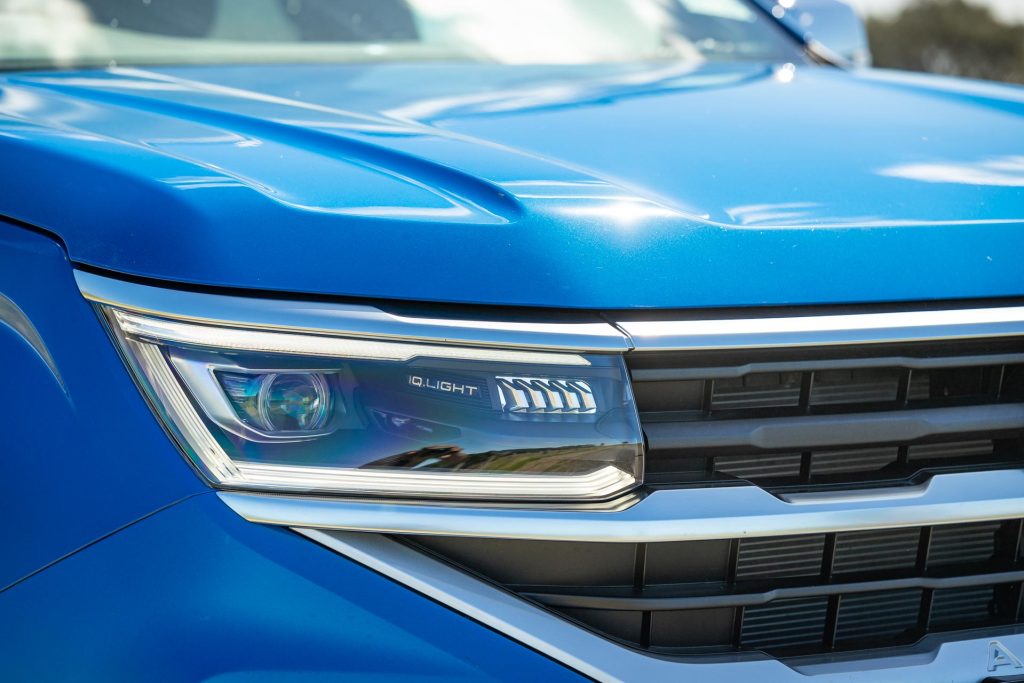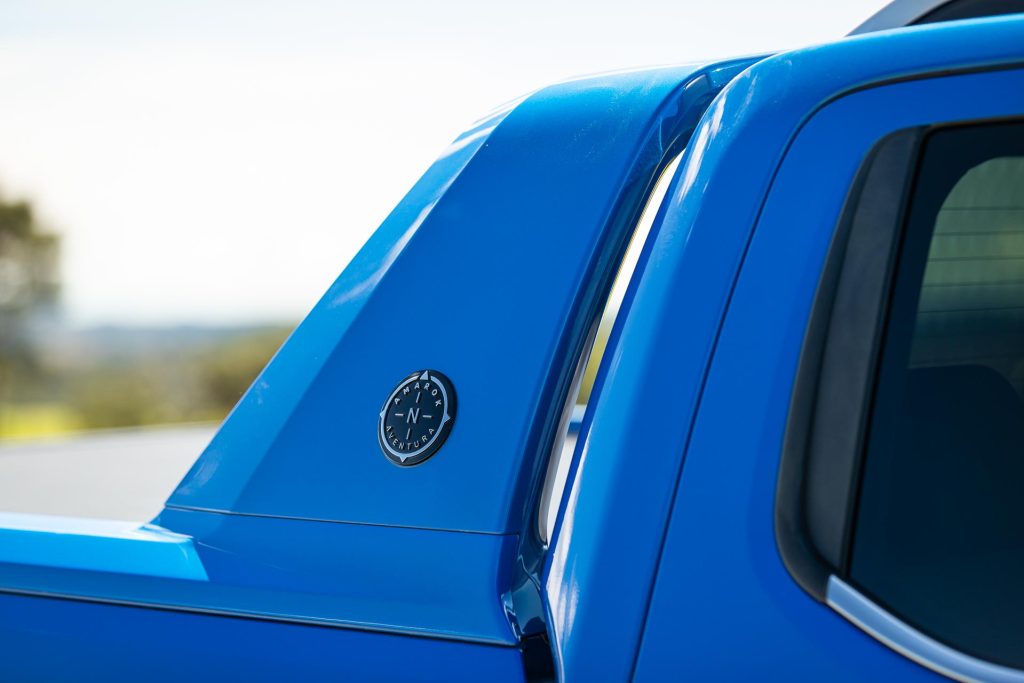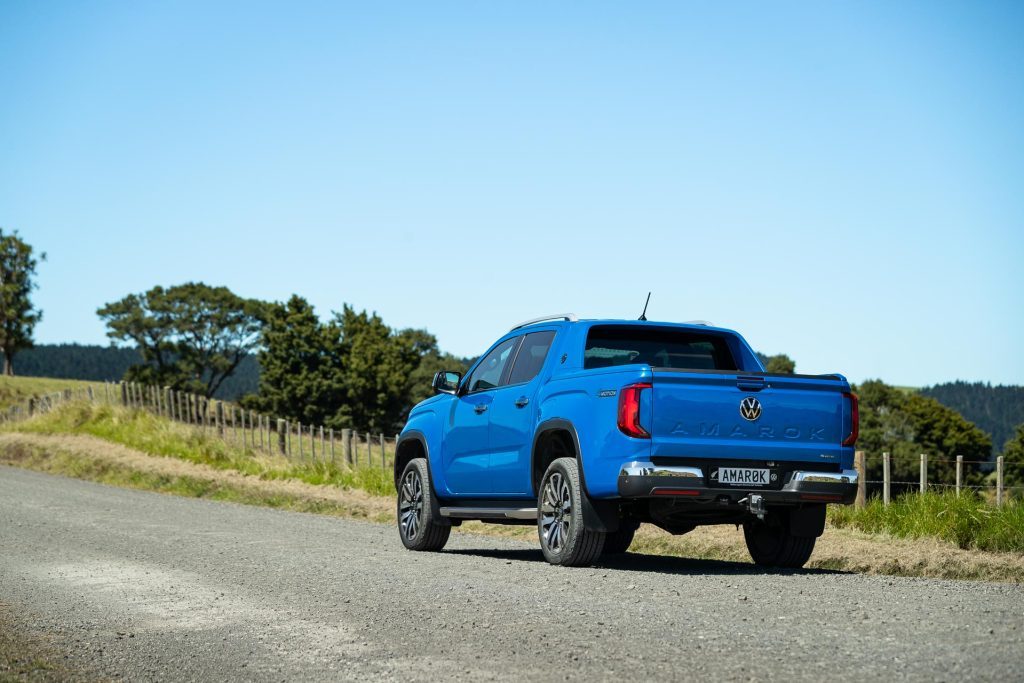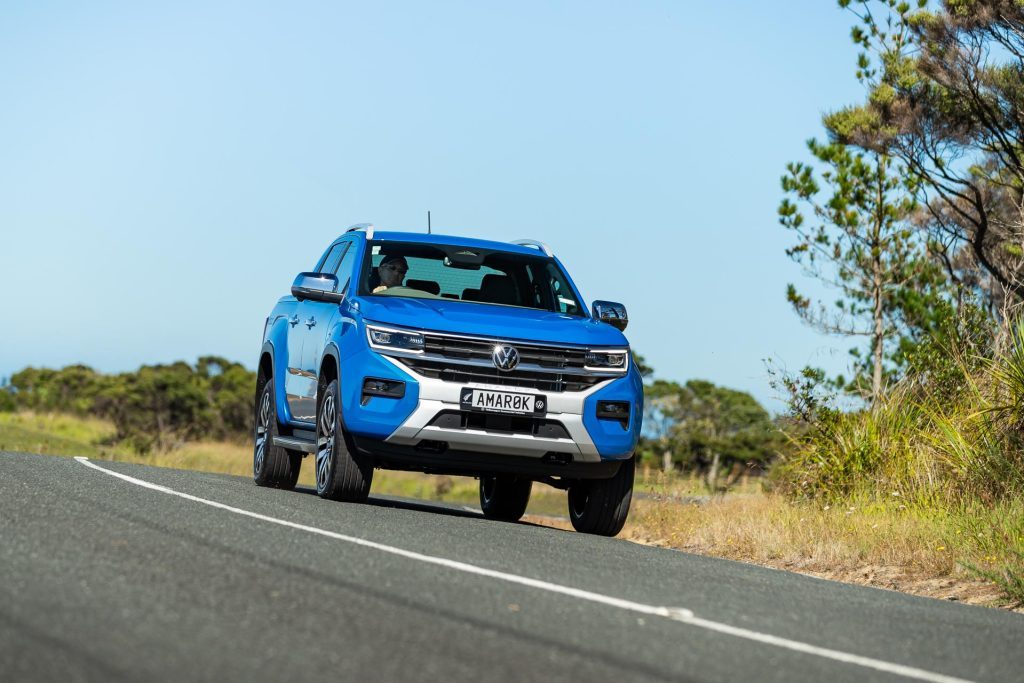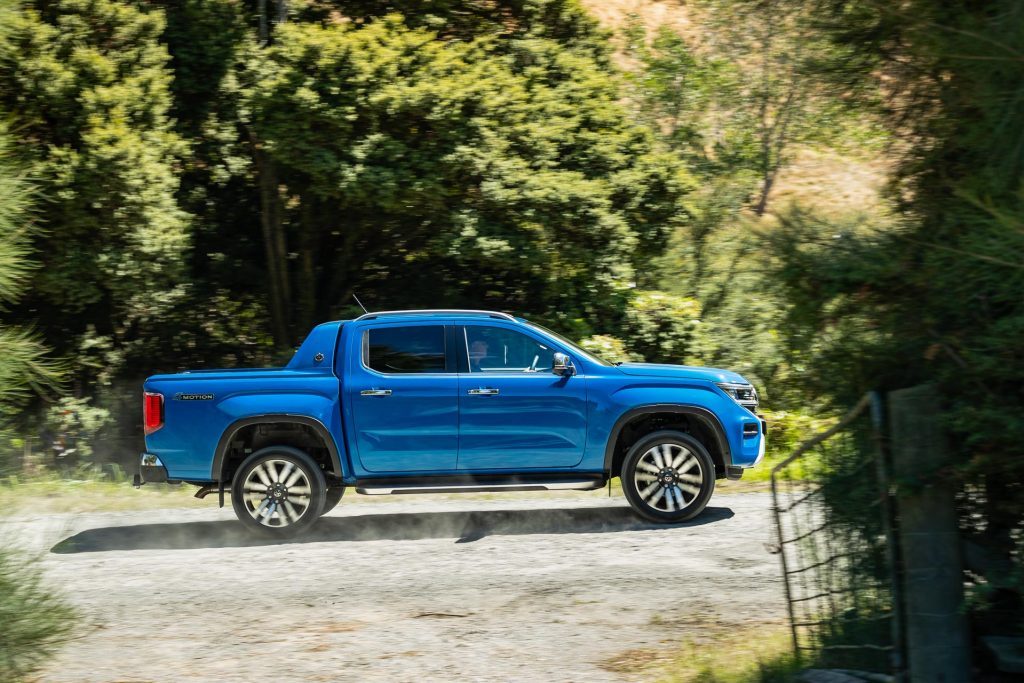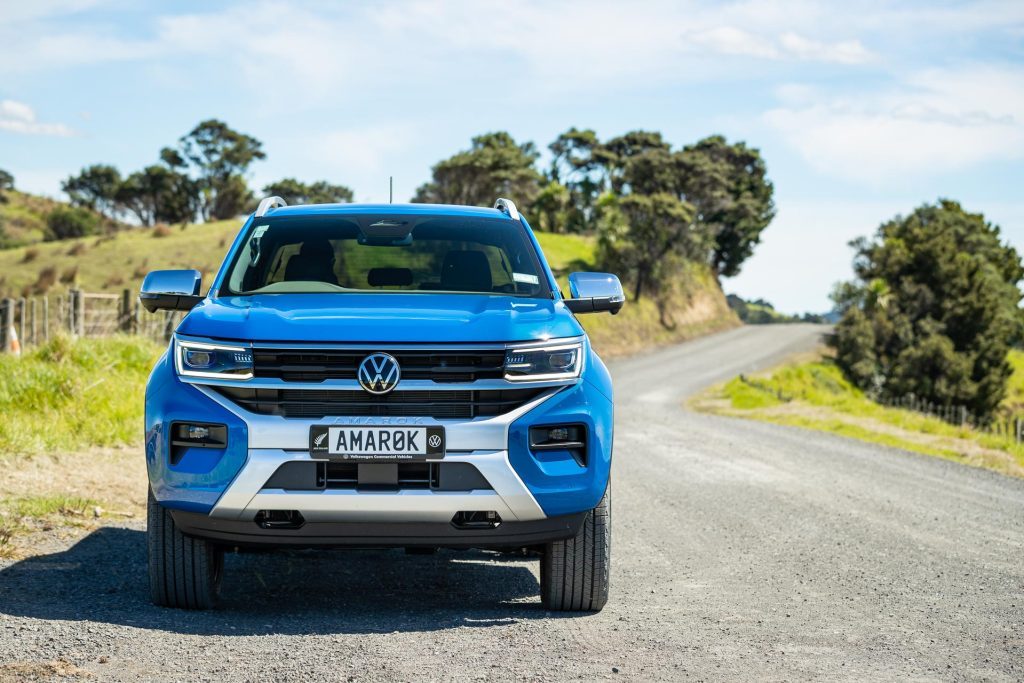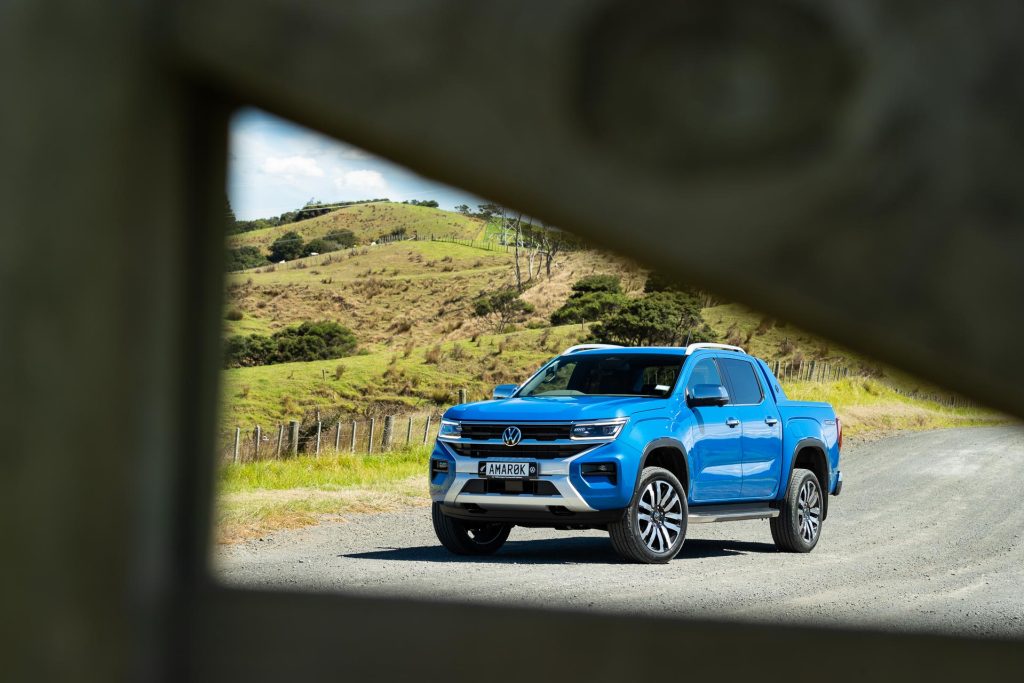2024 Volkswagen Amarok Aventura petrol review
VW has added a four-pot petrol variant to its top Amarok model, the Aventura. How does it compare with the V6 TDI?

In the modern double-cab ute era, you can choose big, bigger or humongous. Little isn’t really an option.
They all seem to be 5m or more and this latest addition to the Amarok range measures up at 5350mm, almost 100mm up on the previous generation of Amarok.
The reason we mention this is because it can feel supersized in the central city. Finding a park that this would slot into really wasn’t easy.
Same as at the golf club up Mangawhai way, its 2210mm width (including mirrors) making it XXXL, precluding the use of a marked park. We sloped off in the end to the range area where there’s more breathing space.
In narrow streets you also need to take extra care. It’s the same when parking, the surround camera a godsend. Or you can direct the vehicle to park itself.
Back at home, finding a spot on our street big enough to berth the blue meanie meant leaving it 100m away. So if you’re living in a city apartment we’d suggest this isn’t quite the right vehicle for you, unless your job demands it.
Diesel has fallen from favour overseas, especially in Europe where it’s as popular as a Russian dictator. But in utes, many tasked with hauling up to 3.5 tonne braked loads, it still rules the roost, though electrified variants are on the way.
The petrol Aventura is also rated to tow hefty braked loads, though without quite the muscular low-rev swagger of the 600Nm turbodiesel. But then it doesn’t have the nox emissions of that either.
This is one of two VW Aventura utes that are identical apart from their powerplants, even costing the same, $93k. That puts them at the pointy end of the double cab ute market.
Instead of packing the 184/600Nm 3.0 V6 turbodiesel, this TSI Aventura comes with a 2.3-litre 222kW/452Nm four-cylinder turbopetrol.
Its combined WLTP figure is 10.6L/100km (247g/km). The trip computer suggested 15.5L/100km over the past 550km, but coasting back into town on the Northwestern MW, we noted consumption figures in the low tens using adaptive cruise. Town figures are up round 15 as well.
Power is still sent through a 10-speed automatic transmission with selectable four-wheel drive, 2H and 4A being the most often used, with 4H and 4L for adventure driving.
Locked and loaded
The petrol model is impressively endowed with executive-style features, including 21-inch alloys, sidesteps and Matrix LED headlights, while inside looks flasher than the Ford Ranger upon which it’s based, with premium Harmon Kardon sounds, heated steering wheel and leather seats, wireless device charging, and a 12-inch infotainment touchscreen.
Where utes two decades ago got few frills, this comes with items like twin gloveboxes, dual zone air and sat nav. A powered roller shutter is an optional extra. Safety items extend to adaptive cruise with stop and go, lane keeping assist and traffic sign recognition.
Figure also on AEB with junction assist, blind spot monitoring, a slew of airbags and RCTA with autobraking. Amarok comes with a 2023 five-star ANCAP safety rating.
Other items include idle stop and auto hold, a sports bar, chrome exterior highlights, and a leather look dash top.
For the lifestylers, a rugged waterproof carpet lining for the wellside tray is another optional extra, so anything you might stow in the back doesn’t move around much or make a noise.
And there’s central locking which also activates the tailgate. A pity then that we somehow managed to lock the key in the tray (it was in our golf bag) and under the locked hardlid.
And so we were locked out of the vehicle for a day. I’m just used to throwing the bag in the boot and still being able to drive off.
However, the tray of a double cab ute isn’t really connected to the cabin in the way that a hatch or boot is in a car or SUV. Doh.
I guess the moral is to always have the keys on your person (and maybe give up golfing). Evidently 16,000 people lock themselves out of their vehicle each day in the US alone.
VW has Roadside Assist but they couldn’t guarantee accessing the vehicle without inflicting damage to the tonneau cover.
As it happened we had a friend heading up north from Auckland so it was simpler to pick up and deliver a spare key fob that VW was able to provide us with on a Sunday. Thanks for that.
The quickest Amarok
We’d driven Aventura before as a V6 turbodiesel and it goes well, the 600Nm of twist kicking in with fullback strength from 1750rpm.
The turbopetrol’s peak of 452Nm arrives at 3350rpm where it fires really well but down low you need to apply more gas to get the tranny to downshift and hasten things along.
There are no paddles or a sport setting, despite six drive modes. Manual switches on the gear selector are more for holding gears when towing.
So torque is less but there’s a bunch more power on tap, 222kW vs 184kW for the diesel, and this proves pretty quick once the engine is spinning in the zone.
It’s over a second faster on the sprint, though the differential is less on the overtake, both in the mid-five second bracket.
The TSI version is a supremely quiet cruiser too, without any of the TDI engine clatter. And despite the generous low profile (275/45R21) rubber we recorded no SPL measurements above 67dB.
There’s a bit more wind noise than anything, unsurprising given its almost 1.9m of height. Here the rear steps prove handy.
The Aventura uses a dynamic suspension setting, so the secondary ride can be jiggly, like any ute with leaf springs and rigid axle at the rear, especially when unladen and traversing sharp-edged bumps.
Primary ride is better but overall comfort levels are surpassed by similar priced and sized crossovers and SUVs; you’re buying this for other reasons, the ability to load guff on the back or tow.
Only because of its kerb weight of around 2.3 tonnes, the load capacity of the wellside is 818kg, slightly less than with some other models.
One other aspect we’ve noted before, and that’s extended emergency stopping distances; none was below 40m.
This is pretty typical of a modern ute on the handling front as well; it manages well up to a point when squealing and understeer kick in, at which time the ESP system nips it in the bud.
On dry surfaces it feels much the same in 2H as it is in 4A. Large size SUVs offer a better ride and handling package overall but then they don’t have the practicality of the wellside which is easily accessed by its powered roller door, providing the key fob is on hand.
Nor do they look quite as ornery as this with its blingy bits and massive wheels.
Up against it is the slightly more expensive Ranger Raptor which comes with a stronger 3.0 V6 twin-turbo petrol, while it has even more of an off-road orientation, but there’s a tonne less braked towing capacity than with the Aventura.
Model
Volkswagen Amarok Aventura
Price
$93,000
Engine
2261cc / IL4 / T / DI
Power
222kW@5900rpm
Torque
452Nm@3350rpm
Drivetrain
8-speed auto / Switchable 4×4
Fuel Use
10.6L/100km
C02 Output
247g/km
0-100km/h
7.43sec
80-120km/h
5.47sec (155.8m)
100-0km/h
44.65m
Stability systems
ABS, ESP
Safety
AEB, ACC, BSM, LDW,
RCTA, ALK, AHB
Luggage Capacity
80L
Tow rating
750kg (3500kg braked)
Fuel Capacity
80L
Service intervals
12 months/15,000 km
Warranty
5 years/150,000km
ANCAP rating
5 Stars (2023)
Weight
2282kg (claimed)
Also consider
